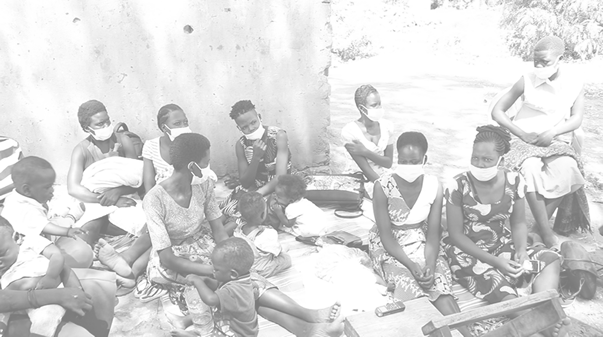
The wellbeing of thousands of girls in Uganda, particularly Eastern Uganda, is at risk with reports of high repeat adolescent births in nearly three decades. A repeat adolescent birth is a second or more live birth before age 20 following a first birth before age 18 years! According to a study conducted by Dr. Dinah Amongin, a THRiVE PhD scholar, over 1 in two girls who have had first birth below age of consent (18 years), proceed to have another live birth before they make 20 years of age. The study, ‘Understanding trends and trajectories of repeat adolescent birth in Uganda’ sought to quantify the challenge, explore factors associated with repeat adolescent births; socio-economic and reproductive outcomes among women in Uganda toward the end of their reproductive life-course (40-49 years) and the motivators and circumstances for repeat adolescent birth in Soroti and Katakwi districts of Uganda.
Following an analysis of the Uganda Demographic and Health Surveys (UDHS) of 1988/89, 1995, 2000/01, 2006, 2011 and 2016, Dr. Amongin found that among women aged 20–24 years for whom the first birth occurred before age 18 years, the percentage reporting a repeat birth before 20 years has registered slight decline over the 30 years (58.9% in 1988/1989, 55.6% in 2016).
When examined at age 40-49 years, women who had first birth before 18 years were poorer, less educated, had spouses of older age and low socio-economic status compared to those who did not give birth before 18 years. This was worse among those who had repeat adolescent births. Furthermore, women who had repeat adolescent births had a total of seven live births compared to five among those with no birth before 18 years of age.
“Girls who have had a repeat adolescent birth have on average seven children in life compared to 5 children among those who did not have a live birth before age 18 years,” says Dr. Amongin.
Motivators for repeat births
Extreme household poverty characterized by peasantry, alcohol abuse and large families was an overarching reason for the decisions that resulted in the first (under age birth) and subsequently, repeat adolescent birth. Poverty led to inadequate provision of basic needs resulting into girls engaging in unprotected sexual activity in a bid to secure financial support. Largely, girls were in school at first pregnancy and immediately dropped out once the pregnancy was confirmed. Teen mothers are more likely to have a repeat birth if they drop out of school.
“Repeat adolescent birth in Uganda is premised around attempts to address the economic distress precipitated by first birth. Many women want to delay that repeat birth but financial challenges rob them of their reproductive autonomy,” the research partly reads.
Other contributing factors cited in the research are: vulnerability characterized by marital entrapment, partner coercion, and domestic violence.
Enduring Consequences
Compared to a teen mother with one child, results show that girls who have a second birth before 20 years are at a greater risk of school discontinuation, greater likelihood of poverty and impaired health for the baby.
“Many adolescents with repeat adolescent birth are taken out of school entirely and this underscores the need to prevent early marriage in a country where marriage/union before 18 years remains common,” says Dr. Amongin.
Moreover, premature births and low birth weight are a major problem affecting children of adolescent mothers. These factors put the newborns at greater risk of poor survival and other opportunities in life. Additionally, the second or more children are more likely to put more strain onto the mother and the consequences get multiplied.
Preventing Repeat Teen births
Repeat adolescent births can be prevented. In her study, Dr. Amongin gives a number of recommendations that government, healthcare providers and communities can adopt in order to nip repeat adolescent births in the bud. These are: helping mothers gain information about and use of effective types of birth control; alleviating household poverty and domestic violence; implementation of a school continuation policy or providing alternative forms of education for adolescent mothers and strengthening legislation against early marriage.
“Beyond focusing on preventing index adolescent pregnancy, programs need to specifically place emphasis on preventing repeat adolescent pregnancy,” she advises.
For more information, please contact:
Ninsiima Racheal, Communications Officer,
THRiVE, Makerere University College of Health Sciences
+256 (0) 775290689
Email: ninsiimaracheal@gmail.com
